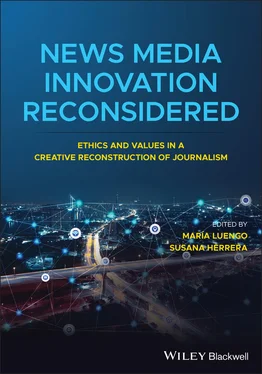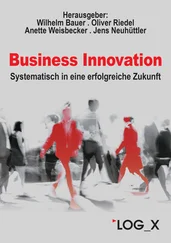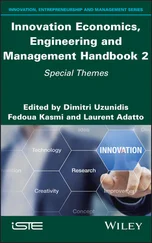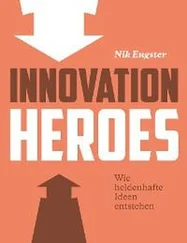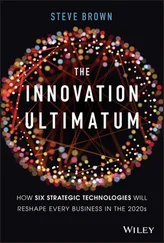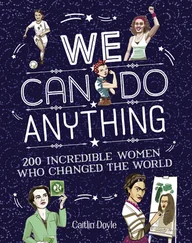A holistic perspective on innovation must include the pre-phase of the innovation process, considering for example goal setting, customer research, or observation of competitors (Dal Zotto and van Kranenburg, 2008). Taking a step further, Bleyen et al. (2014, p. 48) established a typology of media innovations based on five categories: business model, production and distribution, media consumption, inner form, and core product. The first three categories are related to innovation processes, and the latter two highlight product innovations, such as a groundbreaking television news program or an original podcast.
Therefore, media innovation encompasses complex processes that involve people’s motivations, strategy, structure, administrative processes, and systems that could create value for the organization, because the characteristics of the media sector differ from those of other industries (Küng, 2017). Specific features include the perishable commodity of the news product, creative employees, intricate organizational structures, and a public service role, among others. As Sádaba, García-Avilés, and Martínez-Costa (2016) argue, strategic innovation leads to better services and increased responsiveness to users and, therefore, an increase in sales, subscriptions, or audiences. In Pavlik’s words (2013, p. 190), “innovation is the key to the viability of news media in the digital age.”
Innovation does not only relate to products and technologies but also relate to the reinvention of social processes and the creation of services that improve people’s lives (Fagerberg, Mowery, and Nelson, 2005). Innovating consists of providing a novel solution for a problem that is more effective, efficient, or sustainable than existing solutions. Innovation should not be reduced to technology. In fact, non-technological aspects such as storytelling, creativity, commercialization, or interaction with audiences are important areas of journalism innovation. If innovations emerge only through the reaction to the threats from the instability of the news market, technological disruption, and the competitive commercial environment, the change could be slow and erratic. However, when management takes the lead, innovations increase in number and quality. Incorporating new practices and experimenting with different ideas is essential for innovation to flourish in media companies (García-Avilés et al., 2019).
We argue for a holistic approach to research in this field by considering many aspects that influence journalism innovation processes, being aware of the conflicting tensions that emerge.
Innovations and Journalism Ethics: 2000–2020
In 2000, I began to explore the consequences of the digitalization of television newsrooms in the work of broadcast journalists. Between 2007 and 2014, I studied the convergence models implemented in several European media outlets. Since 2014, I research journalistic innovation, to find out where and how it occurs and what kinds of changes it brings about (De-Lara-González et al., 2015; García-Avilés et al., 2018). According to our findings in the Spanish market, most innovations take place in the areas of product and service, content distribution, and interaction with the audience. Most innovative initiatives were “incremental”: smaller advances or gradual improvements of existing products or services. A few “radical” innovations occurred, mostly within online-only sites. The number of technology-related innovations outweighed the non-technological, leading us to conclude that “while innovation is not necessarily associated with technology, it is an important driver of change” (García-Avilés et al., 2018, p. 38).
Taking one further step, we analyzed how media companies implemented innovations in four main areas: production, distribution, organization, and commercialization (García-Avilés et al., 2019). Each area has its own goal within the company: launching innovative products, improving the distribution channels, innovating in the work structure and newsroom organization, and incorporating new sources of revenue. Within different historical media contexts, a combination of internal and external forces helped bring about change and resulted in the innovation of digital journalism.
A recurring theme in my conversations with journalists over the years has been the reaction to change. I have often discovered an attitude of distrust by most professionals. Before each wave of changes, many journalists invoked news quality and ethical principles to justify their willingness to stay out of innovation, because they regarded innovations as a problem, something that demanded a lot of time and work, or that could threaten their job stability. It is interesting to find out that journalism has traditionally been a profession reluctant to embrace change.
In this study, necessarily short due to space limitations, I present in chronological order some the ethical implications derived from the adoption of innovations in digital journalism.
The Emergence of Journalism in the Internet
Between 1995 and 2000, thousands of newspapers and television channels worldwide launched their websites and began generating content to feed them. The initial concerns of journalists with the advent of the Internet focused on privacy, falsehood, and loss of autonomy (Deuze and Yeshua, 2001). The new medium was quickly associated with a high potential for spreading falsehoods involuntarily or deliberately. It was difficult to differentiate the truth in the Internet content, since anyone could easily replicate the credibility indicators without taking any responsibility. Many journalists feared that instant dissemination of information would undermine the processes of journalistic verification that protects them against errors and lies, so that they would be accountable for their ethical standards (Eberwein, Fengler, and Karmasin, 2019).
The value of professional autonomy also went into crisis. Journalists defended their role as “independent gatekeepers,” based on their ability to make their own judgments about what news is and, therefore, reinforce their public interest service (Suárez-Villegas and Cruz-Álvarez, 2016a). The argument was that a careful selection of news by professional gatekeepers would make it easier for citizens to receive truthful and relevant information on the issues that are supposed to be essential for democratic functioning: politics, international relations, economics, the performance of institutions and social agents, etc. However, from the beginning, the ability of users to select and access content directly was evident; journalists were losing their monopoly as providers of information in society, which caused them considerable frustration (Boczkowski, 2004).
Convergence and Multimedia Content
There were two main trends at the beginning of the new millennium: experimenting with convergence by combining news, products, and processes in separate newsrooms of print, television, and online media; and producing multimedia content for several outlets (Singer, 2006). Convergence soon became a buzzword that shook most newsrooms: editors asked newspaper reporters to record videos at the scene or to make their own summaries of the news for radio or television. Managers commissioned broadcast journalists to write articles for the newspaper and to promote the stories included in the print media. Thus, journalism became “convergent” and journalists more versatile, as they had to generate content simultaneously for several platforms (García-Avilés, Meier, and Kaltenbrunner, 2016).
Regarding the production of multimedia content, there was a lot of resistance by journalists. Some of them admitted that this was due to fear of the unknown. However, others justified their fear on ethical grounds, emphasizing the detrimental effects on the news quality, the limited time available to produce more pieces, and the increasing pressure to develop pieces for radio, website, print, and/or television. Work overload often reduced journalistic quality and increased tensions among staff in multimedia newsrooms (Carvajal and García-Avilés, 2008).
Читать дальше
